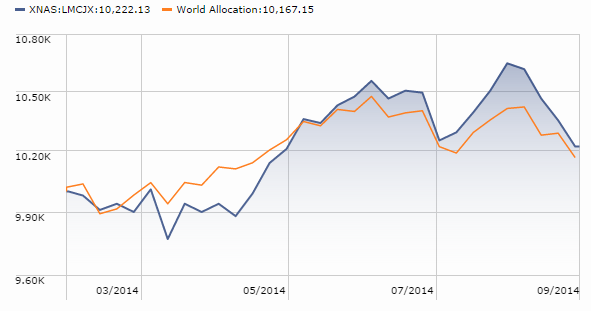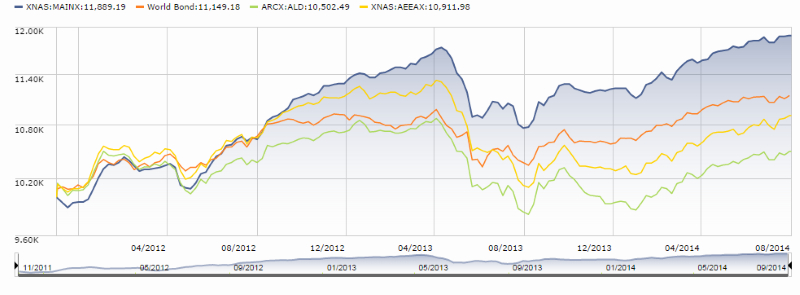AC Alternatives Equity Fund
AC (American Century) Equity Fund will seek capital appreciation. The plan is to hire sub-advisors to pursue specialty equity strategies. The initial set of strategies and subs include long/short equity (Passport Capital) and event-driven and trading strategies (Perella Weinberg Partners). The prospectus allows for inclusion of a long-only equity strategy as well. PWP is also responsible for selecting, assessing and harmonizing the various strategies and subs. The opening expense ratio hasn’t been released but this doesn’t sound like it’s gonna be cheap. The minimum initial investment is $2,500.
AC (American Century) Alternatives Income Fund
AC (American Century) Alternatives Income Fund will seek “diverse sources of income.” The plan is to hire sub-advisors to pursue specialty income strategies. The initial set of strategies and subs include Arrowpoint Partners (opportunistic corporate credit, a sort of high yield bond and loan strategy), Good Hill Partners LP (structured credit) and PWP (a hedging overlay plus MLPs). The opening expense ratio hasn’t been released but this doesn’t sound like it’s gonna be cheap. The minimum initial investment is $2,500.
AC Alternatives Multi-Strategy Fund
AC (American Century) Multi-Strategy Fund will seek capital appreciation. The plan is to hire sub-advisors to pursue specialty alternative strategies. The initial set of strategies and subs include Long/short credit (Good Hill Partners LP and MAST Capital), event-driven (Levin Capital), long/short equity (Passport Capital) and then Global macro, real asset and trading strategies (Perella Weinberg Partners). PWP is also responsible for selecting, assessing and harmonizing the various strategies and subs. The opening expense ratio hasn’t been released but this doesn’t sound like it’s gonna be cheap. The minimum initial investment is $2,500.
ASTON/Pictet Premium Brands Fund
ASTON/Pictet Premium Brands Fund will seek capital appreciation. The plan is to invest in the stocks of companies that have “superior quality goods or services that enjoy a high level of brand recognition and that are expected to have relative pricing power and high consumer loyalty.” The fund will be managed by Caroline Reyl, Laurent Belloni, and Alice de Lamaze, all of the Sector and Themes Fund Team at Pictet. On face there’s something modestly regrettable in the symbolism of assigning female portfolio managers to the luxury shopping fund. That said, the team manages a billion dollar, Swiss-domiciled version of the fund. They’ve returned 6.3% annualized since 2007. Their 13.2% returns over the past five years seem solid, but they trail their consumer goods benchmark and have relatively high volatility. The opening expense ratio will be 1.31%. The minimum initial investment is $2,500, reduced to $500 for tax-advantaged accounts.
Brown Advisory Global Leaders Fund
Brown Advisory Global Leaders Fund will seek to achieve capital appreciation by investing primarily in global equities. The plan is to invest in “leaders within their industry or country as demonstrated by an ability to deliver high relative return on invested capital over time.” In addition to investing directly in such stocks, they have the right to use derivatives and ETFs (which does make you wonder why you’d need to buy the fund). The fund will be managed by Mick Dillon of Brown Advisory. Mr. Dillon used to be head of Asian equities for HSBC. The opening expense ratio has not yet been set. The minimum initial investment is $5,000, reduced to $2,000 for tax-advantaged accounts.
Brown Capital Management International Small Company Fund
Brown Capital Management International Small Company Fund will seek long-term capital appreciation, with some possibility of income thrown in. The plan is to invest in 40-65 “exceptional companies.” The fund will be managed by Martin Steinik, Maurice Haywood, and Duncan Evered. The opening expense ratio, this will be a recurring theme with this month’s funds, has not be disclosed. The minimum initial investment is $5,000, reduced to $2,000 for tax-advantaged accounts.
Direxion Hilton Yield Plus Fund
Direxion Hilton Yield Plus Fund total return consistent with the preservation of capital. The plan is to balance fixed income investments with equities, with a focus on minimizing absolute risk and volatility. Those securities might include common and preferred stocks of any capitalization, MLPs, REITs, and corporate bonds, ETNs and municipal bonds The fund will be managed by a team headed by William J. Garvey, Hilton’s CIO. The opening expense ratio will be 1.49%. The minimum initial investment is $2,500.
Longboard Long/Short Equity Fund
Longboard Long/Short Equity Fund will seek long-term capital appreciation. The plan is to, love the wording here, “considers long positions in a large subset of 3,500 of the most liquid [domestic equity] securities” while shorting indexes. The fund will be managed by Eric Crittenden, Cole Wilcox and Jason Klatt. The team also runs Longboard’s expensive but successful managed futures fund.The opening expense ratio will be high; they haven’t announced the expense ratio but the all-in management fee is 2.99%. The minimum initial investment is $2,500.
Matthews Asia Sustainability Fund
Matthews Asia Sustainability Fund will seek long-term capital appreciation. The plan is to invest in “Asian companies that have the potential to profit from the long-term opportunities presented by global environmental and social challenges as well as those Asian companies that proactively manage long-term risks presented by these challenges.” The fund will be managed by Vivek Tanneeru with co-manager Winnie Chwang. The opening expense ratio will be 1.45%. The minimum initial investment is $2,500, reduced to $500 for tax-advantaged accounts.
SMI Bond Fund
SMI Bond Fund will seek total return. This will be a fund-of-funds except when it’s not. The FOF portion of the portfolio is managed by the folks at Sound Mind Investing using a momentum-based “bond upgrading” strategy; when they choose to invest directly in bonds, they’ll delegate the task to the folks at Reams Asset Management, the fixed-income arm of Scout Funds. The fund will be managed by the same team that handles SMI’s other three funds. The opening expense ratio has not yet been announced. The minimum initial investment is $500.
SMI 50/40/10 Fund
SMI 50/40/10 Fund will seek total return through investing in other funds. We’re not particularly fans of portfolios built around complex trading strategies so rather than ill-tempered snark, we’ll just report that 50% of the portfolio will be invested in a dynamic allocation strategy focusing on the three most attractive (of six) asset categories, 40% in a fund upgrader strategy and 10% in a sector rotation strategy. The fund will be managed by the same team that handles SMI’s other three funds. The opening expense ratio has not yet been announced. The two SMI funds already on the market are relatively expensive (1.8% and 2.2%) and their performance has been no better than middling. The minimum initial investment is $500.
Spectrum Advisors Preferred Fund
Spectrum Advisors Preferred Fund will seek long term capital appreciation. The plan is to create a complicated portfolio with many moving parts, in hopes of capturing pretty much all of the market’s upside and only 40% of its downside. The offense is provided by a “performing upgrading” strategy for stock investments and the use of leverage. The defense is provided by some combination of cash, bonds, and shorting. The fund will be managed by Ralph Doudera of Spectrum Financial. The opening expense ratio will be 2.35%. The minimum initial investment is $1,000.
Toreador SMID Cap Fund
Toreador SMID Cap Fund will seeks long-term capital appreciation. The plan is to invest in the stocks of U.S. and foreign small- to mid-sized companies. Those are defined as “stocks about the size of those in the Russell 2000.” The fund will be managed by Paul Blinn and Rafael Resendes, who also manage Toreador’s two other so-so equity funds. The opening expense ratio has not yet been announced. The minimum initial investment is $1,000 for retail shares and $10,000 for institutional ones.
USA Mutuals Takeover Targets Fund
USA Mutuals Takeover Targets Fund will seek capital appreciation. The plan is to invest in companies that they believe will be, well, takeover targets. They anticipate holding a lot of cash. The fund will be managed by Gerald Sullivan, a really nice guy who also runs the Vice Fund. The opening expense ratio will be 1.50%. The minimum initial investment is $2,000, reduced to $1,000 for retirement accounts.
Waycross Long/Short Equity Fund
Waycross Long/Short Equity Fund will seek long-term capital appreciation with a secondary emphasis on capital preservation. The plan is to invest, long and short, in mid- to large-cap stocks. Their investable universe is about 300 companies. The fund will be managed by Benjamin Thomas of Waycross Partners. The opening expense ratio has not yet been announced. The minimum initial investment is $2500.

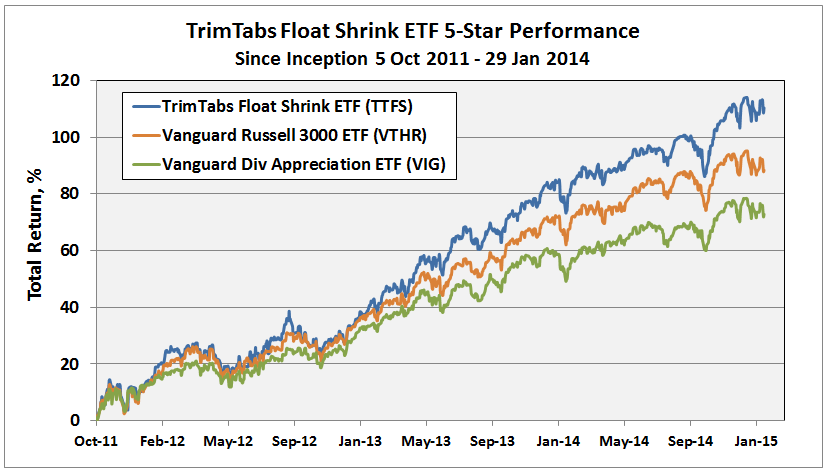

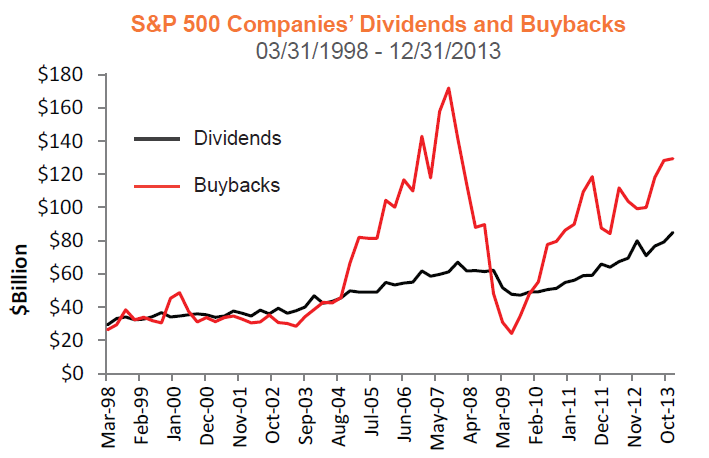
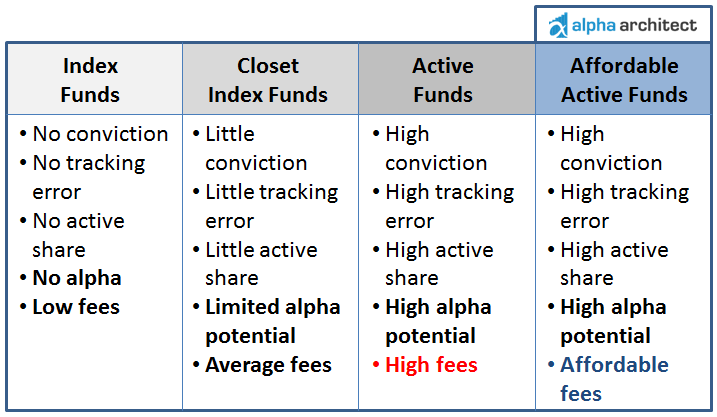
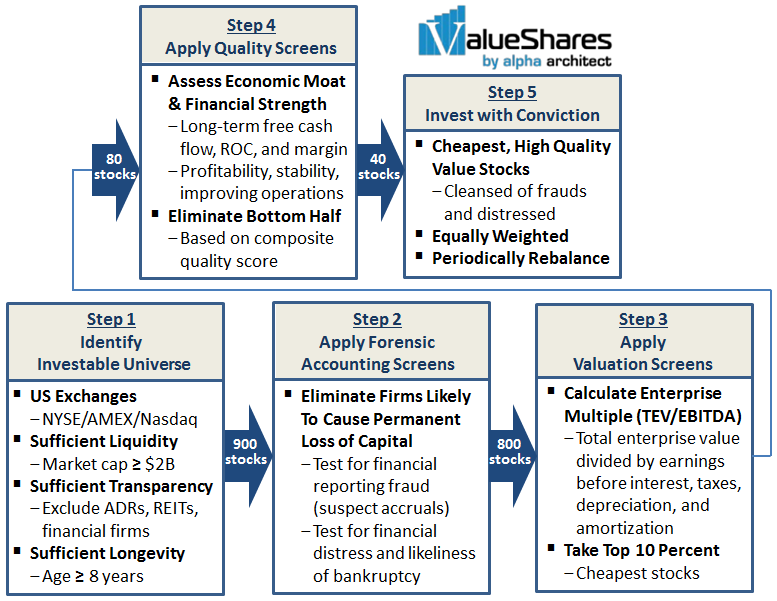

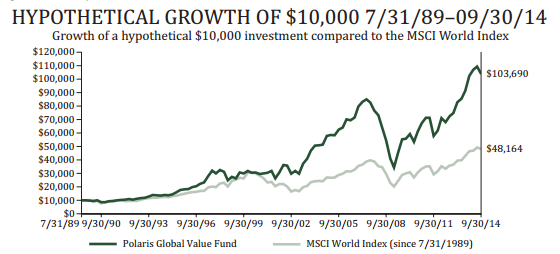 Okay, if that one six quarter period didn’t exist, Polaris would be about the world’s finest fund and Mr. Horn wouldn’t have any explaining to do.
Okay, if that one six quarter period didn’t exist, Polaris would be about the world’s finest fund and Mr. Horn wouldn’t have any explaining to do.

